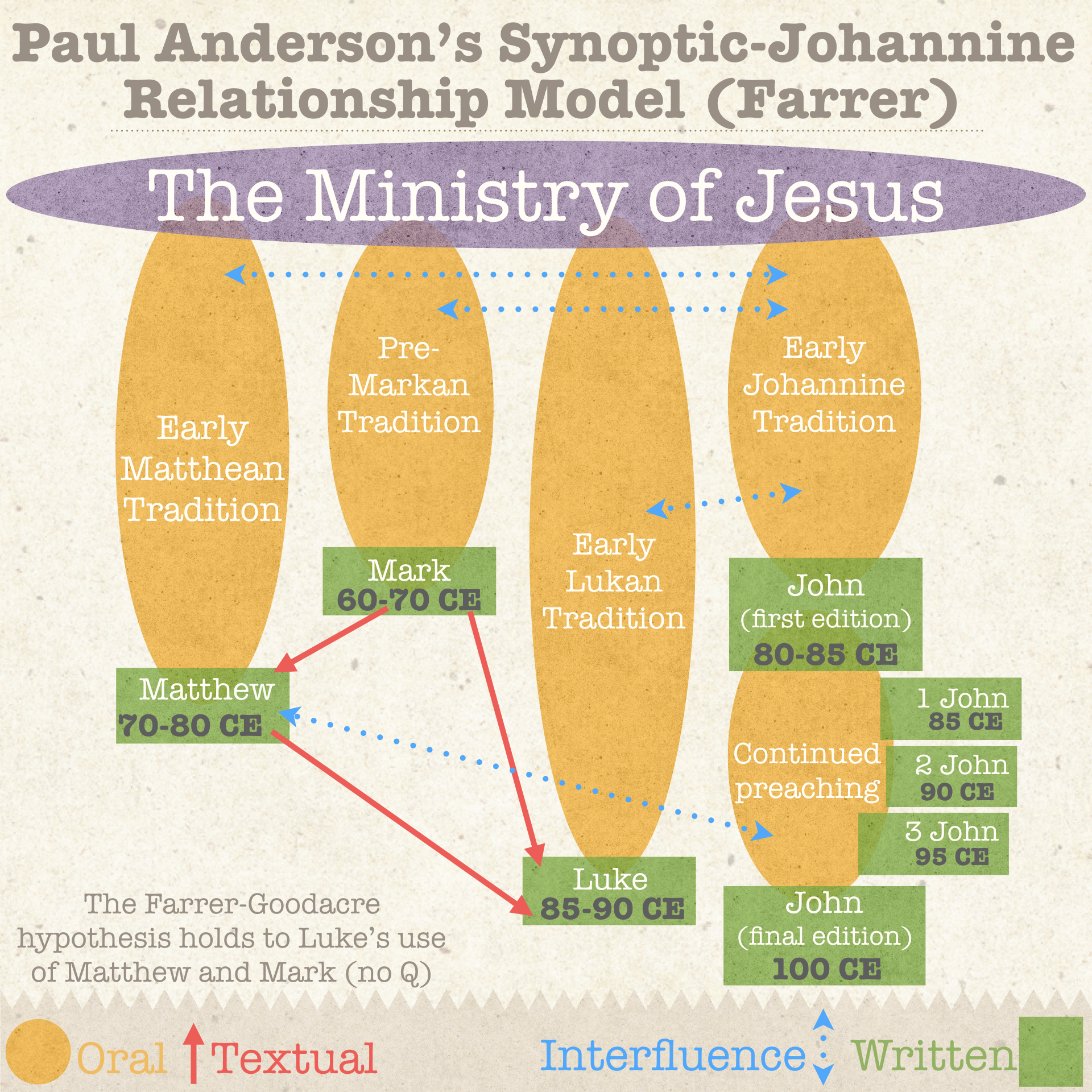
A blog / biblioblog by New Testament scholar Danny Zacharias. It includes his musings on whatever he is musing about.
The Relationship Between John and the Synoptics
In preparation for my first time teaching the Gospel of John at ADC this year in my new role as Professor of New Testament, I have been reading scholarship on the Gospel of John. In particular, I have been enjoying Paul Anderson's work on John. I may be wrong, but a preliminary looks suggests to me that he has published more on John than any living scholar…
In preparation for my first time teaching the Gospel of John at ADC this year in my new role as Professor of New Testament, I have been reading scholarship on the Gospel of John. In particular, I have been enjoying Paul Anderson's work on John. I may be wrong, but a preliminary looks suggests to me that he has published more on John than any living scholar (please correct me if I'm wrong).
Part of his research that has fascinated me is his theory of composition for John and his theory on the interrelationship between John and the synoptic gospels.
Anderson presents a diagram that he titles Johannine-Synoptic Interfluential Relationships in The Fourth Gospel and the Quest for Jesus (pg 126) and The Riddles of the Fourth Gospel (pg 151). I would like to represent this diagram here for your consideration (with some jazzing up), as well as explain the diagram somewhat. You can also read an article by Paul Anderson on this theory in more detail in this article. After the explanation, you will see 3 more diagrams. Anderson's diagram adopts the 2-source theory of the synoptic gospels. I thought I would also create alternative diagrams adopting some other prominent synoptic theories (Farrer-Goodacre, Matthew Conflator Hypothesis, and Holtzmann-Gundry) – you'll find them at the bottom of the post. What I have linked to are some summaries of these theories. I especially commend to you Alan Garrow's page on the Matthew Conflator hypothesis. I'm currently quite taken with Garrow's hypothesis of Matthean posteriority, and his video on the linked page is a great presentation of the argument.
Paul Anderson rightly critiques the common discussion on the synoptic relationship (a discussion which I enjoy) while leaving John out of the picture. This is a valid critique. Most synoptic discussion assumes no relationship between John and the synoptic gospels, yet numerous scholars believe there is in fact some sort of relationship. Anderson labels this an Interfluential relationship, meaning that at numerous stages in the composition of John, there was mutual influence within the traditions, which ultimately shows itself in the final writings of the Gospels. For the Gospel of John, we do not have a textual relationship as we do the synoptics, but Anderson argues that John nonetheless displays awareness of the other gospels.
In regards to Anderson's understanding of the writing of John (right side of the image), Anderson believes that the early Johannine tradition and the first edition of John is rooted in the Beloved Disciple's work, the disciple John, and is written somewhat in response to the Gospel of Mark. He continued his ministry and tackled false teaching, as evidenced in 1-3 John. After the apostle John's death, John the Elder compiled the Gospel in its final form, adding the Prologue (John 1:1-18), the feeding and sea-crossing (John 6), the discourse material (John 15-17), the additional ending (John 21), and some other scattered material on the beloved disciple (John 13:23, 19:26, 19:34-35, 20:3, 21:7, 21:24). This additional material is what has interfluence with the Gospel of Matthew.
Some final notes on the diagram:
- Anderson's diagram displayed Q as entirely oral. I've added a green outline and lines to indicate that Q shouldn't be seen as only an oral tradition.
- I've also altered Anderson's "interfluence" lines to demarcate textual connection with interfluence connection. This helps to better understand the relationships between the gospels, as the synoptic connections are clearly textual.
- As with most discussion on the dating of the Gospels, the dates are flexible. I personally lean towards a pre-70 CE dating for Matthew (something I'll blog on at some point), which pushes Mark into the 50s or 60s.




